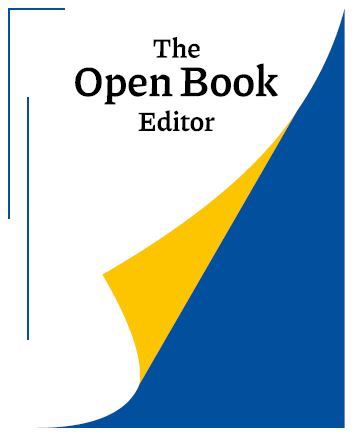Taking the time to edit your book is a key part of writing. Unfortunately, many writers find it to be an intimidating process, while others are unaware of why editing is important. This is only natural. Editing can feel like a drag after the rush of putting words on the page, and you might be tempted to try your luck by sending your book out into the world as is.
However, writers should expect to go through multiple rounds of revisions on their own before submitting their book to agents or publishers, or self-publishing it. Even if you think your manuscript is well-structured and without any plot holes or major errors, we’ve all read articles and books where typos have slipped through the cracks, right? So, you’ll have to edit your book sooner or later if you’d like to see it in the wild one day.
But whipping your manuscript into shape needn’t be a painful process, so long as you take the right approach. Read on for 7 excellent tips to understand how you can break the editing process down into manageable steps.
1. Don’t start too soon
Some writers are good at making changes as they write, but, in most cases, you should avoid going back to edit your book before you’ve finished the final chapter. As tempting as it might seem to edit as you go, this can put a dampener on your creativity and make it harder to finish the manuscript. Once you are in the writing flow, it’s best to push through to the end, then let your completed manuscript sit for a few weeks (or several months, if possible). After a little time away, you can come back with fresh eyes, ready to edit your book.
2. Read from start to finish

When you feel ready to come back to edit your book, don’t rush into making any big changes. Instead, read your manuscript as though you are one of your future readers: from start to finish and for enjoyment. This will give you a good sense of what the reader will experience, including anything that doesn’t work or any errors in logic, spelling, or formatting.
Resist the temptation to edit as you go. Instead, make chapter notes along the way (write them on a piece of paper or record notes in your e-reader). Experience the story as a whole before coming back to address specific problems.
3. Tackle one editing aspect at a time
Once you have read your manuscript all the way through and made notes, stop to consider how you will tackle the next round of edits. If you just jump in with hodgepodge revisions, you will probably end up feeling overwhelmed and confused. Even worse, editing this way can cause you to miss a lot of important details.
Plainly put, you need a manuscript editing plan. With each round of active edits (yes, you’ll edit your book many, many times before it’s ready), focus on one aspect. For example:
Round One
Make sure the plot is coherent or the arguments in your non-fiction book are logical and accessible to your target audience.
Round Two
Focus on making your characters believable and ensuring they have satisfactory story arcs.
Round Three
Explore your style and prose and ensure your voice is consistent.
Round Four
Tidy up the smaller issues, like typos and grammatical mistakes.
4. Read your book out loud
While it may sound tedious (and a bit cringe-worthy) to read your own writing out loud to yourself, this is actually one of the most effective methods to self-edit. It’s easier to pick up on awkward phrasing or misplaced words when you can actually hear them, and if you find yourself stumbling over certain sentences, there’s a good chance you need to make a few changes to help the words flow better.
In particular, reading aloud is also a great way to discover if your dialogue rings true. Believable dialogue can be tricky to write, so record yourself reading any speech like you imagine it would be spoken in an actual conversation and play it back to see how it sounds.
Tip: For all you writers out there who love Scrivener, the program can read your writing back to you. Under ‘Edit’, select ‘Speech’, then ‘Start Speaking’. This is a very helpful feature, as long as you don’t mind the robotic voice!
5. Change the font
Another useful brain hack to help you spot issues when reading your work back to yourself is to alter the font size and style. Believe it or not, this can actually trick your brain into thinking you’re reading something completely new (instead of the hundredth edit of your own book)!
6. Give special attention to your opening
Your opening is what will capture an agent’s or reader’s attention and make them want to read more. So, it’s important you get it right!
Is your first line compelling? What about your opening paragraph or first two chapters? If they feel so-so during your read through, this is probably a sign that something isn’t quite right and you need to rework the beginning.
7. Take your time

While having an editing schedule can be a good way to stay on track, it’s important to remember that you mustn’t rush the process. Be patient with yourself and try not to create too much pressure around hitting deadlines.
Instead, focus on taking as much time as you need to edit your book to the best standard possible. Set aside large chunks of time for editing—preferably a couple of hours in one go, as opposed to snatches of 10 or 15 minutes—so you can completely immerse yourself in your story. And don’t forget that multiple rounds of editing are a normal part of the process. Your manuscript will see a lot more revisions even after it gets picked up by an agent or a publishing house, so don’t feel discouraged by the lengthy editing timeframe; writers everywhere are going through the same thing!
What next?
These seven steps should make it much less daunting to edit your book. But if you feel you need to go beyond your own abilities, or are struggling to kill your darlings, hiring a professional editor is a great next step. There are only so many errors you can catch on your own, and, after several rounds of self-edits, the best thing you can do for your book is to get a new set of eyes on it.
At The Open Book Editor, we offer a range of professional manuscript editing services tailored to suit the unique needs of your particular book. Contact us to find out more about what we offer and make your book the best it can be.


